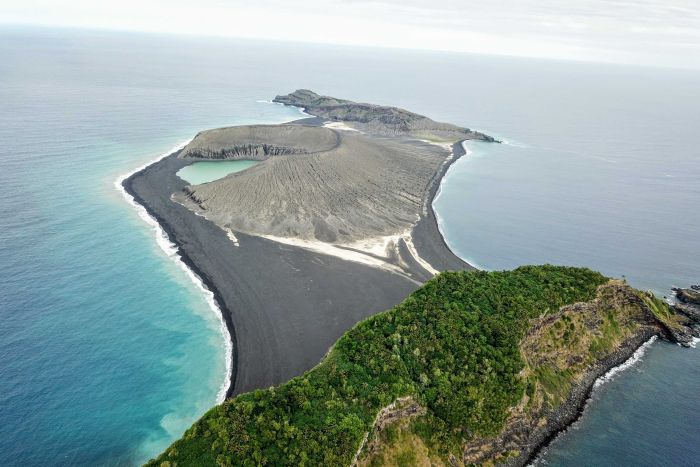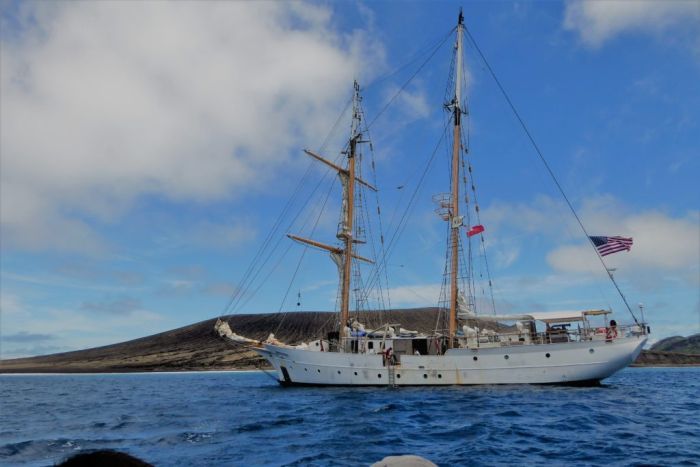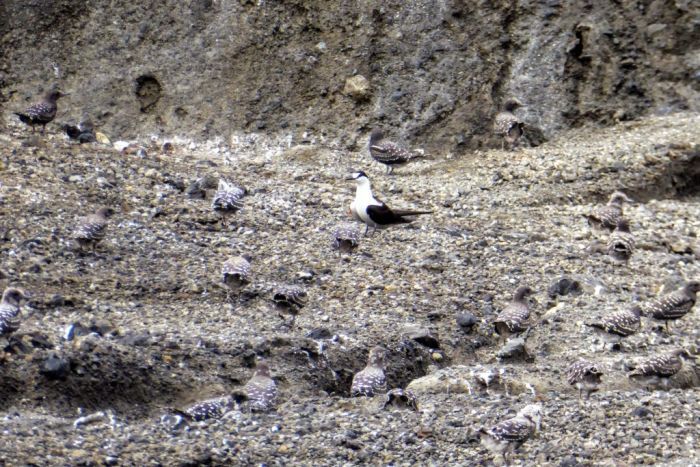■■■■■■■■ bricks.
 I was wondering if this would turn up here. My PhD supervisor is involved in this project.
I was wondering if this would turn up here. My PhD supervisor is involved in this project.
Seriously? Please share any intel you have, Kozza. Cheers.
He’s running a project investigating the impact of sarcoptic mange on wombat populations in Tasmania. As a result, he has access to a large number of wombat carcasses (generally roadkills or individuals that were found severely diseased and subsequently euthanased). At some point he struck up a relationship with some engineers in the US and saw an opportunity to get to the bottom of the cubic poo mystery (and it really was a mystery as there’s no obvious mechanism by which the cubic poos could be formed). He sent off a bunch of intestines and they analysed the musculature, etc.
Incredible stuff. Thanks kindly for sharing.
I want to know what happened to the star that was right next to a supernova.
I tried finding out but there’s a crapload of scientific mumbo jumbo to read through in the published paper.
Too many astrological terms to wrap my head around lol.
Australian researchers discover unique cancer biomarker
How ‘absolutely stunned’ scientists used gold to make a key cancer breakthrough
Olivia Willis
5-6 minutes
The discovery of a unique DNA signature common to multiple cancers could one day revolutionise the way we diagnose cancer, particularly in its early stages, Australian researchers say.
Key points
Key points
- DNA from multiple cancers share a common unique genetic signature
- Cancer marker can be detected by simple blood test
- Further research required to see if test is useful for screening
The cancer marker was identified by scientists at the University of Queensland who have also developed a simple test to detect it in blood and biopsy tissue.
Senior researcher Matt Trau said it had been difficult to find a “simple marker” that would distinguish cancer cells from healthy ones.
“We never thought this would be possible, because cancer is so complicated,” said Professor Trau, whose paper is published today in the journal Nature Communications.
“Even for breast cancer, there are a dozen types, so we thought there would be different tests for different types of cancer.”
The researchers were surprised to find the marker appeared in every type of breast cancer they examined, as well as in people with prostate cancer, colorectal cancer and lymphoma.
“That absolutely stunned us,” Professor Trau said.
“It seems to be a general feature for all cancer.”
Researchers relied on epigenetics
Cancer is caused by changes in DNA, which controls the way cells function.
“Usually, the approach to find cancer markers … is to look at the sequence of DNA,” Professor Trau said.
Taking a different tack, he and his colleagues looked instead at patterns of molecules called methyl groups, which decorate the DNA and control which genes are switched on and off.
The position of these molecules forms part of the epigenome — a set of instructions that controls how genes are expressed.
The researchers found that in healthy cells, methyl groups are spread out across the genome.
But on the genomes of cancer cells, methyl groups were positioned in intense clusters at specific locations.
"If you think of a cell as a hard-drive … the epigenome is sort of like the apps the cell is running at any one moment.
“It seems that to launch cancer, you have to run a series of genetic apps.”
Nanoparticles key to developing test for marker
The researchers developed a test which can detect cancer cells by picking up this epigenetic pattern in blood and biopsy tissue.
The development was made possible after they discovered that placing the cancerous DNA in a solution caused it to fold up into 3D structures.
It turns out these structures stick to gold, so when cancerous DNA is put into a solution with gold nanoparticles, it attaches to them and instantly changes the colour of solution.
“It’s just a simple blood test that you can see with a naked eye,” said Professor Trau.

Further research is required to see if testing for the marker will be useful in cancer screening
Australian Institute of Bioengineering and Nanotechnology, UQ
The scientists tested the technology on 200 human cancer samples and Professor Trau said the accuracy of cancer detection is as high as 90 per cent.
“You can compare that with some of our frontline cancer detection techniques,” he said.
At this stage, the test can only detect the presence of cancer cells, not their type or the stage of the disease.
The research was funded by the National Breast Cancer Foundation and the researchers are now working with the University of Queensland’s commercialisation company UniQuest to further develop the technology.
Still early days
Elin Gray, a senior cancer researcher at Edith Cowan University, said the research was exciting piece of work that offered “a lot of potential”.
Dr Gray, who studies the cancer biomarkers of melanoma, said more work was needed to determine if the test would be useful as a screening tool.
“If it’s very sensitive, we could use it for early diagnosis of cancer … especially for cancers where there is no screening paradigm, like ovarian and pancreatic,” she said.
Therese Becker, a molecular biologist from the University of New South Wales, agreed the research was “interesting” and required further investigation.
“Like all good science, it raises a lot more questions,” she said.
Whether the biomarker is indeed common to all cancers also remains unclear, Dr Gray said.
“It is universal? We don’t know until it’s tested — it’s impossible to know.”
Professor Trau said the next stage of the research was to conduct more clinical testing.
“We certainly don’t know yet whether it’s the holy grail for all cancer diagnostics, but it looks really interesting,” he said.
ABC Health and Wellbeing Newsletter Teaser
Want more ABC Health and Wellbeing?
Deserves more likes.
I hope to live to see the day that most cancers are able to be dealt with. No idea if I’ll be able to benefit from it, of course.
the earth still doing earth things like it has for all these earth years
NASA scientists pay first visit to volcanic island in Tonga so new it is not on any map
about 2 hours ago
Posted
 Photo: The three-year-old volcanic island (centre) as seen from a drone. (Photo: Sea Education Association/SEA Semester)
Photo: The three-year-old volcanic island (centre) as seen from a drone. (Photo: Sea Education Association/SEA Semester)
NASA scientists have paid their first visit to an island that rose out of the sea from the rim of the Hunga Tonga Hunga Ha’apai volcano in Tonga when it erupted in 2015.
Key points:
- The island formed three years ago, has no name and was not expected to last this long
- Visiting scientists and students found an unusual, sticky, light-coloured mud
- They collected data help them understand how it has resisted erosion for this long
The island, which has no official name and which NASA’s Goddard Space Flight Centre researcher Dan Slayback had previously only seen from space, is nestled between two older islands in the South Pacific nation.
Mr Slayback joined scientists and students from the Sea Education Association travelling to the island by boat in early October 2018.
When they landed, they found a sticky and unexpected type of mud, plants starting to take hold that were likely seeded from bird droppings, hundreds of nesting birds — and a barn owl.
 Photo: Scientists and students travelled to the island by boat in October 2018. (Photo: Dan Slayback)
Photo: Scientists and students travelled to the island by boat in October 2018. (Photo: Dan Slayback)
“We were all like giddy schoolchildren,” Mr Slayback said.
“Most of [the island] is this black gravel, I won’t call it sand — pea-sized gravel,” he said.
"And then there’s clay washing out of the [volcano’s] cone.
"In the satellite images, you see this light-coloured material. It’s mud, this light-coloured clay mud.
“It’s very sticky. So even though we’d seen it we didn’t really know what it was, and I’m still a little baffled of where it’s coming from. Because it’s not ash.”
 Photo: NASA researcher Dan Slayback standing on the beach of the island formed by the Hunga Tonga-Hunga Ha’apai volcano. (Photo: Dan Slayback)
Photo: NASA researcher Dan Slayback standing on the beach of the island formed by the Hunga Tonga-Hunga Ha’apai volcano. (Photo: Dan Slayback)
Plants beginning to take root in new soil
The group photographed the new vegetation growing on an isthmus connecting the island to one of its neighbours, some of it possibly growing from bird droppings.
 Photo: Vegetation taking root on the flat isthmus of the new island, with the volcanic cone in the background. (Photo: Dan Slayback)
Photo: Vegetation taking root on the flat isthmus of the new island, with the volcanic cone in the background. (Photo: Dan Slayback)
They also saw a barn owl, which probably flew over from one of the islands next door, and hundreds of nesting sooty terns in the cliffs surrounding the island’s crater lake.
During his visit, Mr Slayback collected small rock samples for analysis back at NASA’s labs, and tried to calculate the actual elevation of the island.
 Photo: Sooty terns and dozens of chicks are nesting around the island’s crater lake. (Photo: Dan Slayback)
Photo: Sooty terns and dozens of chicks are nesting around the island’s crater lake. (Photo: Dan Slayback)
He and the students used a GPS unit to take precise location measurements, and a drone to complete an aerial survey to help make a higher-resolution 3D map of the island.
“It really surprised me how valuable it was to be there in person for some of this. It just really makes it obvious to you what is going on with the landscape,” he said.
Being there in person enabled a better observation and understanding of the deep gullies running down the side of the island’s cone.
“The island is eroding by rainfall much more quickly than I’d imagined,” Mr Slayback said.
"We were focused on the erosion on the south coast where the waves are crashing down, which is going on. It’s just that the whole island is going down, too.
“It’s another aspect that’s made very clear when you’re standing in front of these huge erosion gullies,” he said.
“This wasn’t here three years ago, and now it’s two metres deep.”
 Photo: The cliffs of the island’s crater lake are etched with deep gullies eroded by rainfall. (Photo: Dan Slayback)
Photo: The cliffs of the island’s crater lake are etched with deep gullies eroded by rainfall. (Photo: Dan Slayback)
Island was never expected to last this long
When it rose up out of the Pacific Ocean in early 2015 after the Hunga Tonga Hunga Ha’apai volcano erupted, shooting rocks and lava into the sky, scientists did not expect the land mass to last.
But three years later, it is still standing — and, according to NASA, is one of only three islands formed from volcanic eruptions in the last 150 years that have survivedfor more than a few months.
YouTube: YouTube: The Birth of a New Island
While “there’s no map of the new land”, according to Mr Slayback, he and his colleagues have been watching it from satellites since its birth to try to understand why it has not yet been washed away.
Since the visit Mr Slayback has reportedly been using the data collected at the island to create a more realistic 3D model of the site.
This will help scientists better understand its volume, and how much volcanic ash and material erupted during its creation.
Mr Slayback is also said to be planning another visit to Tonga, to help answer questions about the sea floor surrounding the island.
This could help scientists to better understand why it is has so far been partially resistant to erosion — and why it has survived until now.
 Photo: The island as it appeared on September 19, 2017 with the semi-transparent overlay of the area that was eroded between January 2015 and September 2017. (NASA: Cindy Starr)
Photo: The island as it appeared on September 19, 2017 with the semi-transparent overlay of the area that was eroded between January 2015 and September 2017. (NASA: Cindy Starr)
Topics: volcanic-eruption, space-exploration, science-and-technology, earth-sciences, tonga, pacific
Two initial questions and one observation:
Can I name it?
Can I buy it?
Cool.
These robots must have been programmed by the guys who work at Aussie Post or QANTAS. I have watched them cartons from a great height as well.
yep - never look at out a plane window at the baggage handlers unloading bags
a terrifying lack of care
Meh - I reckon I could do it faster myself, and I wouldn’t even need to stick my bum out like they are.
24/7 , 365 days a year?
I have a lot of stamina.
Ok, no.
But I bet I have better humour!